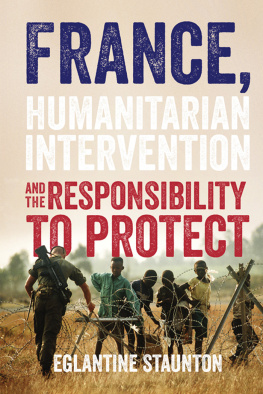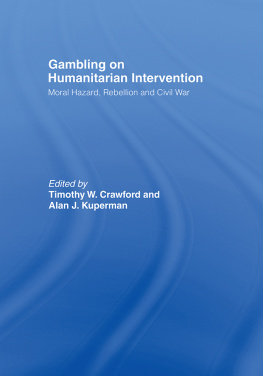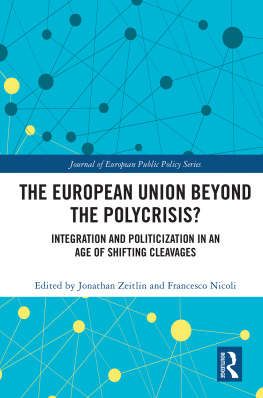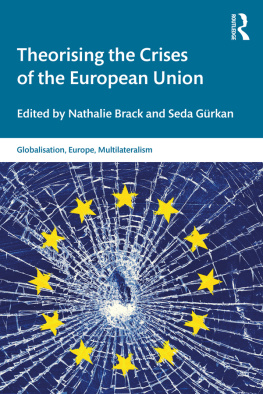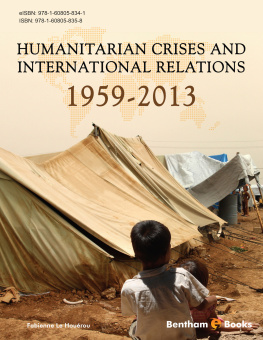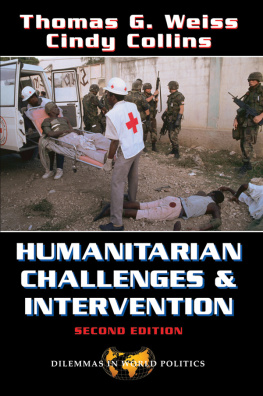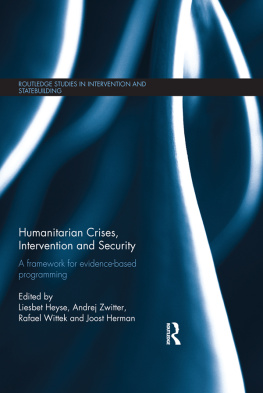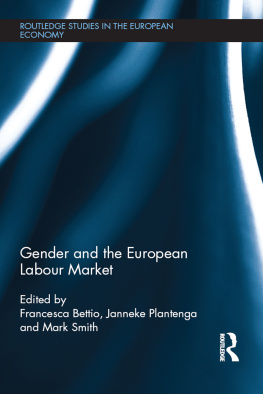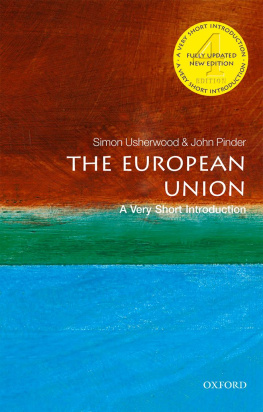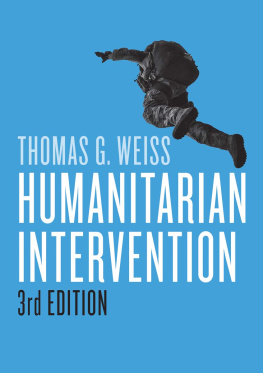THE EUROPEAN UNION AND HUMANITARIAN CRISES
The European Union and Humanitarian Crises
Patterns of Intervention
FRANCESCA PUSTERLA
University of Geneva, Switzerland
First published 2015 by Ashgate Publishing
Published 2016 by Routledge
2 Park Square, Milton Park, Abingdon, Oxon OX14 4RN
711 Third Avenue, New York, NY 10017, USA
Routledge is an imprint of the Taylor & Francis Group, an informa business
Copyright Francesca Pusterla 2015
Francesca Pusterla has asserted her right under the Copyright, Designs and Patents Act, 1988, to be identified as the author of this work.
All rights reserved. No part of this book may be reprinted or reproduced or utilised in any form or by any electronic, mechanical, or other means, now known or hereafter invented, including photocopying and recording, or in any information storage or retrieval system, without permission in writing from the publishers.
Notice:
Product or corporate names may be trademarks or registered trademarks, and are used only for identification and explanation without intent to infringe.
British Library Cataloguing in Publication Data
A catalogue record for this book is available from the British Library.
The Library of Congress has cataloged the printed edition as follows:
Pusterla, Francesca.
The European Union and humanitarian crises : patterns of intervention / by Francesca Pusterla.
pages cm
Includes bibliographical references and index.
ISBN 978-1-4724-5178-1 (hardback) -- ISBN 978-1-3156-1642-1 (ebook) -- ISBN 978-1-3170-3306-6 (epub) 1. Humanitarian assistance, European. 2. Humanitarian assistance--Government policy--European Union countries. 3. European Commission. Humanitarian Aid Office. I. Title.
HV583.E85P87 2015
361.6094--dc23
2015008815
ISBN 9781472451781 (hbk)
ISBN 9781315616421 (ebk-PDF)
ISBN 9781317033066 (ebk-ePUB)
For you
Contents
List of Figures
List of Tables
Acknowledgements
The process of writing this book has been a pretty challenging endeavour which would have been impossible to achieve without the grateful help and continuous support of numerous people. I would here like to warmly thank all those people who always supported and inspired me during the time it took me to write this book and who made it possible and unforgettable. I would thus like to express my sincere gratitude to all of them for their priceless support and encouragement, advice and guidance, positive criticism and insightful comments. My special gratitude goes to my husband Elia and my son Tommaso; to my relatives and all my friends. They always encouraged me and were on my side during the good as well as the bad times. In particular, I wish to show huge gratitude to Elia, just for being him and the best academic teammate ever. His stalwart presence helped to make the accomplishment of this work a delightful experience.
I would also like to thank the Ashgate team, with special gratitude to Rob Sorsby, Amanda Buxton and Lianne Tapscott for their constant help and precious time, and the anonymous reviewer for the helpful and constructive comments on my book.
Introduction
Issues in Humanitarian Aid
Over the last few decades, interest in humanitarian aid has grown. International organisations, national governments and governmental and private actors have multiplied their efforts to limit and possibly put an end to natural catastrophes, man-made atrocities and political and economic breakdowns affecting civil populations. Consequently, cooperative and unilateral emergency actions have been carried out with the aim of recovering people in need during and after any humanitarian crisis all around the world. Several studies have been conducted addressing questions concerning the definition of humanitarian intervention, the reasons for it, its legitimacy, its goals and the role of actors allocating and receiving aid.
It follows that the evident political attention to humanitarian aid allocation also reverberates within academic research on this topic. Accordingly, a particular emphasis has been placed on studies addressing the strategies of foreign aid allocation in a context shared between bilateral aid where donors finance humanitarian aid through the signature of bilateral agreements with recipient countries and multilateral aid where donors frame their aid within the institutional context of international organisations. Among the different scientific approaches, such contemporary studies addressing the central issue of bilateral and multilateral aid allocation take on specific relevance for the purpose of this work.
Indeed, the analysis of humanitarian aid allocation in this study aims at answering the following general research question: how to explain the international actors choices between bilateral and multilateral humanitarian aid allocation?
Specifically, there are two main focuses to the study of bilateral and multilateral aid allocation in need of preliminary clarification. First, relevant studies have been conducted with the aim of underpinning the main differences between bilateral and multilateral aid and disclosing the reasons for states preference in favour of the former or the latter. Second, many studies investigate more specifically the realm of multilateral aid allocation. These two approaches delineate the scientific debate into which this work inserts itself and frame the specific angle it takes.
In what concerns the first focus, Milner (2006) provides a good discussion of the reasons for choosing between bilateral and multilateral foreign aid, while other authors identify more specific differences between bilateral and multilateral humanitarian aid, thus suggesting possible reasons for states choices. To this end, Maizels and Nissanke (1984) and Burnside and Dollar (2000), for example, underline how multilateral aid is more independent than bilateral aid. Maizels and Nissanke suggest that bilateral aid often hides donors economic interest, while multilateral aid is neutral and devoted to real recipients needs. Burnside and Dollar follow this path by claiming that bilateral aid is more inclined than multilateral aid to satisfy donors political considerations. Some example of political considerations possibly leading bilateral aid are also provided by Alesina and Dollar (2000) who maintain that states are particularly inclined to provide foreign aid to their former colonies. Moreover, Alesina and Weder (2002) suggest that bilateral aid does not take into consideration aid conditionality criteria, such as the level of corruption of the recipient government. Nonetheless, these findings are largely challenged by other studies claiming that no significant differences exist between bilateral and multilateral aid in what concerns either aid to former colonies (Neumayer, 2003) or level of corruption of recipient governments (Neumayer, 2003; Svensson, 2000). All these contributions witness the relevance of this first focus.
In what pertains to the second focus, several researches have addressed the topic of aid allocation within a multilateral context. Accordingly, McLean (2012) has recently investigated the procedure through which states select a specific multilateral organisation to rely upon as foreign aid provider from a range of available organisations. Other authors, more specifically, investigated the share of budget devoted by states to foreign aid allocated multilaterally and the different distribution of multilateral foreign aid between the recipient countries (Frey and Schneider, 1986; Boone, 1996; Cashel-Cordo and Craig, 1997; Schraeder et al., 1998).



